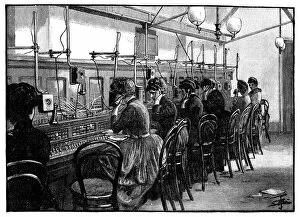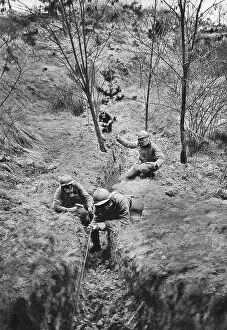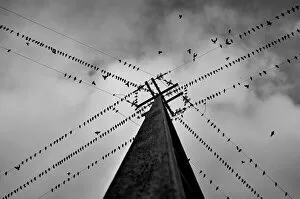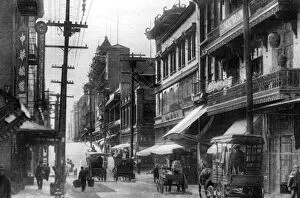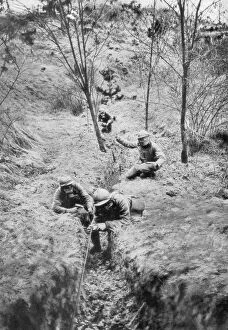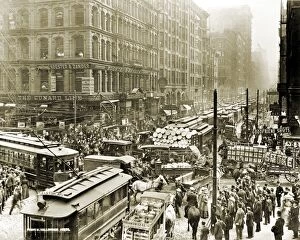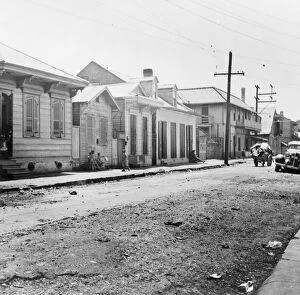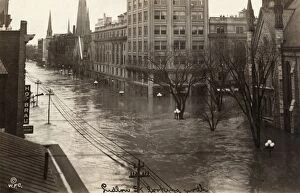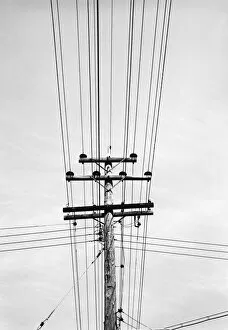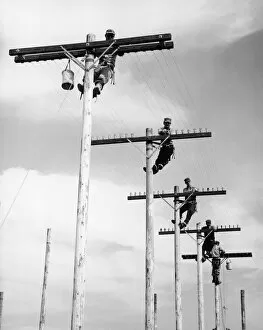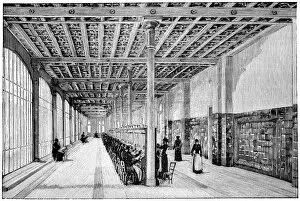Telephone Line Collection
"Connecting the World: A Journey Through Telephone Lines" Step back in time to 1889, when the telephone bureau exchange was established
All Professionally Made to Order for Quick Shipping
"Connecting the World: A Journey Through Telephone Lines" Step back in time to 1889, when the telephone bureau exchange was established, revolutionizing communication as we know it. The chirping and chilling sounds of early telephone conversations filled the air, marking a new era of connectivity. In 1939, Dorothea Lange captured an image of a rail fence with poor barbed wire in the foreground in Person County, North Carolina. Little did she know that this humble scene would soon be transformed by the power of telephone lines. Fast forward to 1942, where men worked tirelessly on telephone lines near a TVA dam hydroelectric plant. Alfred T Palmer's photograph immortalizes their dedication and highlights how these lines brought communities together. The bustling streets of Chinatown in San Francisco came alive with wired connections in 1926. Telephones became essential tools for businesses and residents alike, bridging gaps between cultures and languages. Even amidst war-torn landscapes like those seen in Fench sappers' gas masks re-laying telephone lines after bombardment during World War I in 1918, communication remained vital. These brave individuals ensured that even amidst chaos, voices could still be heard. Chicago's Dearborn Street witnessed congested traffic but also witnessed progress as telecommunication networks expanded rapidly across America. In 1909, Chicagoans experienced firsthand how interconnectedness shaped their lives. New Orleans' Tulane University stood proudly opposite "the stave, " its campus buzzing with students eager to connect through telephones. This hub of knowledge embraced technology's advancements while preserving tradition. During WWII in Sicily (1943), British and Italian soldiers joined forces to restore communication systems ravaged by conflict. Their efforts exemplified resilience and unity as they rebuilt what had been destroyed. Finally, picture an old telephone line winding through remote mountain areas on a distant small road—a testament to human ingenuity reaching even the most isolated corners of the world.

